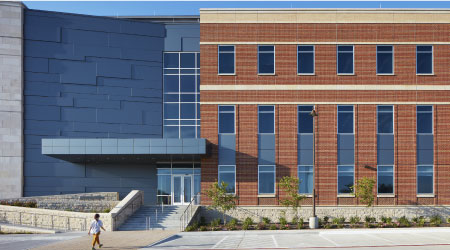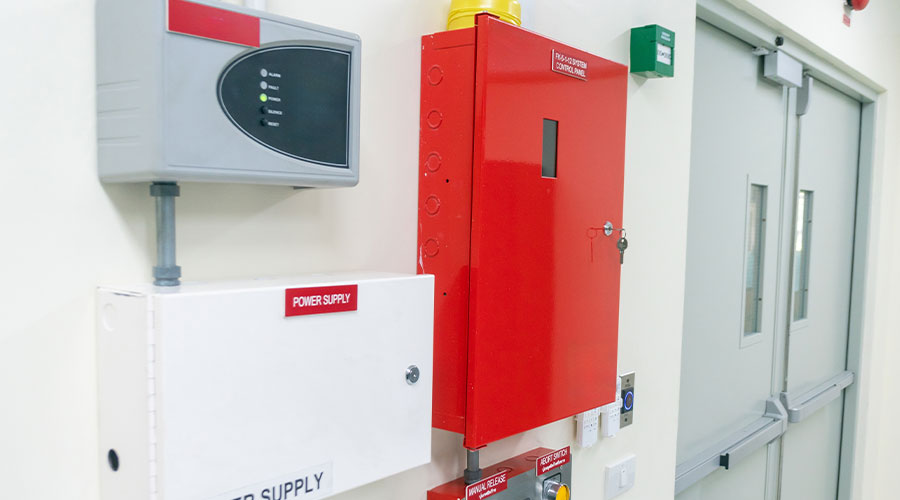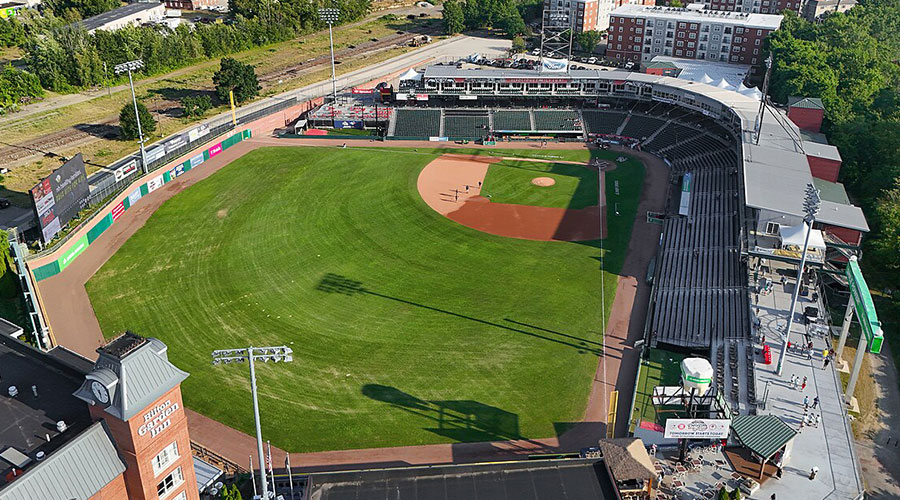 Careful attention must be paid to transitions between exterior elements to ensure long-term energy efficiency and weatherization performance.Mark Herboth
Careful attention must be paid to transitions between exterior elements to ensure long-term energy efficiency and weatherization performance.Mark HerbothHigh-Performance Exteriors Provide Long-Term Energy Efficiency
Pay close attention to how building enclosure systems intersect. Mistakes at transitions can result in energy inefficiency and premature failure of individual elements.
A properly designed and maintained exterior building enclosure system plays a vital role in protecting building occupants from the elements, but also in lowering the energy demands for the overall building. Air, water, vapor, and thermal control layers all work together to keep interior spaces dry and conditioned.
While each of these individual layers contribute in their own way to the overall performance and energy efficiency of a building, how these layers intersect and interact are just as important. Frequently, the source of air or water leakage into a building occurs at one of the transitions between these varying enclosure control layers. Air leakage can cause a heavier load on the heating, ventilation, and air conditioning systems, increasing the energy demand of the building, and potentially causing condensation on interior surfaces. Water leakage can cause damage to interior finishes, accelerate deterioration of structural components, and introduce the potential for occupant health effects caused by microbial growth. Repairing damage caused by water leakage has financial, time, and energy impacts.
It is critical to examine how the design and construction of the building enclosure control layers contribute to the overall energy efficiency of the building.
Product selection
When it comes to product selection for building enclosure-related systems, there is no shortage of options. Starting from the top of a structure, most commercial buildings have low-slope roof systems, which typically consist of either single-ply membranes, modified bitumen, built-up roofs, metal roof panels, or fluid-applied roofing membranes.
Roofing systems then tie into vertical wall components that may consist of exterior opaque wall assemblies and/or fenestration. Opaque wall systems mainly consist of masonry brick veneer, architectural precast concrete, metal wall panels, stone cladding, stucco, exterior insulation finish systems, and/or other claddings. Fenestration systems are typically comprised of storefronts, curtainwalls, window walls, skylights, louvers, and/or other window types. Below-grade walls are typically comprised of solid concrete or concrete-masonry units with either self-adhered sheet waterproofing membranes, bentonite sheet panels, crystalline admixtures, or fluid-applied waterproofing membranes. Finally, floor slabs typically consist of a concrete slab over a vapor barrier at the foundation.
Insulation at these areas is also important for achieving required thermal performance, and may include batt insulation, rigid board insulation, spray-applied insulation, and/or other types of insulation.
With so many options, it can be a daunting task to make any selection. Apart from aesthetics, it is recommended that facility managers also consider and communicate what level of performance they are hoping to achieve when it comes to thermal and energy efficiency. This gives building designers the ability to present viable options that can meet the owner’s expectations.
Each type of material has its own set of advantages and disadvantages and is suitable for different applications. It is important to understand the benefits and risks of any material before making a selection. For example, materials with a higher solar reflectance index, such as cool roofs or solar reflective glass, are a wise choice for energy savings as they reflect more sunlight and absorb less solar energy. Increasing insulation thickness or selecting insulation materials with higher R-values helps to reduce the thermal load on a building. Product selection and the specified performance requirements should always reflect the owner’s goals and, at a minimum, meet building code requirements.
The selection of quality roofing, fenestration, insulation, and air barrier materials in particular can greatly affect the performance of the building.
Whichever material type suits each building’s needs, it is recommended to choose trusted manufacturers and products with a long history of successful applications. The quality and long-term durability of a product is vital. Often, the higher initial costs of high-end products end up saving building owners money and headaches in the long run due to better performance. Just as important as a quality product is having access to knowledgeable and helpful manufacturer representatives that are available to the designer, contractor, and owner for any concerns along the way.
Single-source manufacturing — selecting the same manufacturer for multiple products on a project — also goes a long way in helping construction, detailing, and warranty requirements run smoothly, which all work to create a more durable, weathertight building and benefit energy efficiency in the long run.
Detailing considerations
Once the types of materials are selected, the next step in the design process is to ensure that the enclosure systems are properly detailed, especially at transitions between different enclosure components. Standard details on construction drawings with basic sections of an enclosure system are typical, but construction challenges often occur at project-specific corners, unique geometries, and intersections on a building.
The continuity of weather barrier membranes must be adequately shown in detail at these project-specific locations so that any potential confusion on the installer’s part is mitigated during construction. If adjacent systems are not properly tied into one another, air and/or water breaches are possible, and the maximum performance level of both systems is decreased. Specific details to look out for include the following transitions:
- Top of roofing parapet walls to vertical exterior walls
- Vertical and horizontal joints between different cladding systems
- Corners where two or more cladding systems intersect
- Balcony/terrace slabs to vertical wall surfaces
- Penetrations through air barrier membranes, such as pipes and fasteners
Building owners can also influence the robustness of enclosure design aspects by choosing to include redundancy in the enclosure systems.
The engineering definition of redundancy can be described as the inclusion of extra components that are not strictly necessary to function, in case of failure in other components. This is highly recommended because weather barrier and air barrier components are very likely to fail over time due to either age-related distress, latent construction defects, or various deterioration mechanisms that are typical to structures located in different areas and climates. The continuity of air barrier components often relies on a bead of sealant and backer rod connecting different components.
For this reason, a dual stage sealant approach is recommended at these critical transitions. This approach consists of an inner, primary bead of sealant which is protected by an outer, secondary bead of sealant. The outer sealant bead can be wept so any incidental water that enters the system can drain out at the controlled weep locations.
Quality assurance and quality control
Even with a carefully reviewed and detailed construction document set, new challenges can be expected during the construction phase that could jeopardize the overall energy efficiency of a building if not properly addressed in a timely manner. For this reason, quality assurance and quality control programs are an essential part of the construction phase and can be catered to focus on building enclosure elements.
Quality assurance starts with the selection of a skilled, qualified contractor — and subcontractors — who will be able to effectively communicate with all parties throughout the project. This is important because construction issues very likely to occur on any project; thus, proper documentation and communication are protocols needed to ensure that all building exterior components are coordinated and ultimately built to provide a watertight and airtight building.
Quality control measures are also crucial during construction to confirm that the as-built conditions meet the required performance requirements related to air and water leakage. One effective way to achieve this is for building owners to retain the services of an independent, third-party inspection and testing agency specifically focused on building enclosure systems. Construction observations from a third-party inspector provide an additional “set of eyes” on the jobsite that are dedicated to protecting the building enclosure from any potential avenues for water leakage or air leakage, especially at locations where different trades intersect. Deficiency tracking is another important tool during construction that should be utilized to confirm that any enclosure-related deficiencies observed onsite are properly documented and remediated.
A robust enclosure quality control program also consists of field testing for air leakage and water leakage at roofs, walls, and fenestration. Field quality control testing by an independent, third-party testing agency can confirm that the completed, installed systems meet or exceed the performance requirements initially set by the owner and architect. The quantities, locations, frequency, and criteria of testing should be determined during the design phase and communicated with the builder at the start of construction.
Ensuring quality throughout a project from pre-design to post-construction can also be facilitated by retaining building enclosure commissioning (BECx) services at the start of a new project. BECx is a quality-focused, formal process of inspecting and testing building components and assemblies to ensure the installed energy and thermal performance requirements of the building enclosure are met. Including BECx services on a building also earns points in the U.S. Green Building Council’s sustainability rating system, Leadership in Energy and Environmental Design (LEED). A LEED-certified building is attractive to tenants because of the energy savings and provides a comprehensive framework for managing the building’s energy performance. Demonstrating commitment to sustainability by achieving a LEED certification also gives buildings a competitive edge in the market.
Proper maintenance
Taking measures to improve the energy efficiency of a building does not end once the building construction does. Maintaining the building’s exterior components during its occupancy phase is just as important to prevent potential air leakage and water leakage over time. Preventive measures that building owners can take include periodic monitoring, inspection, and repair of roofing membranes, exterior claddings, façade joint sealants, and window seals.
Building facilities personnel should monitor the building for signs of air or water leaks by noting any stained interior finishes below roofs or near windows, gaps in seals around exterior openings, or fogging of insulated glazing units. A well-documented history of reported leakage can help pinpoint leak sources, which may need further evaluation or repair. Retaining diagnostic building assessment services can make a significant positive impact on detecting air and water leaks in a building as well, which can include limited non-destructive testing or minimally destructive testing.
Once leak sources have been detected and confirmed, repairs to any distressed building enclosure elements should be performed in a timely manner to avoid further deterioration and leakage. Maintaining all these elements in good, working order — roofs, walls, windows, and the transitions between them — helps keep the overall energy demand of the building low.
Amaris Beza, P.E., is an associate at Walter P Moore, Diagnostics Group. She can be reached at abeza@walterpmoore.com.
Related Topics:












